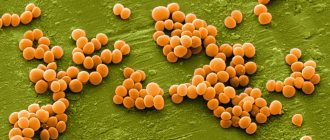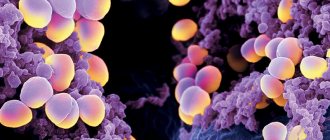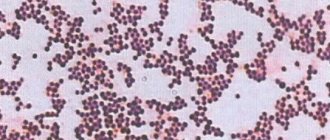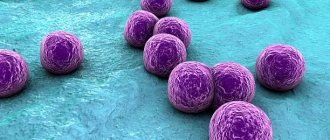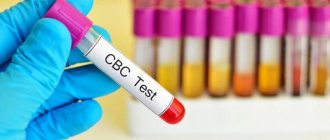About the disease
Staphylococcal infection combines a number of diseases that can manifest as purulent lesions of the child’s skin, pathology of the digestive tract, involvement of ENT organs or even bones in the process.
It is important to consider that the severity of the clinical picture and the danger of the pathology for the patient directly depends on the type of staphylococcus that caused the inflammation. The disease develops sporadically (unsystematically). The risk of infection largely depends on the baby's immune defense. Traditionally, there has been an increase in the number of episodes of staphylococcal infection in newborns. This is due to insufficient secretion of the natural factor IgA, which is responsible for protecting the mucous membranes throughout the human body.
The most common types of staphylococcal damage to the body are:
- digestive disorder caused by staphylococcus;
- septicemia (spread of bacteria in the blood);
- staphylococcal tonsillitis (angina);
- osteomyelitis.
The specialists of the SM-Doctor clinic have many years of experience in successfully treating children of any age who are faced with diseases caused by staphylococcus.
If a person has a weak immune system or the normal composition of the microflora is disrupted, then if the skin (mucous membranes) is damaged, Staphylococcus aureus can lead to a variety of local and systemic infectious and inflammatory lesions:
- skin (carbuncles, impetigo, folliculitis),
- mammary glands (mastitis),
- respiratory tract and ENT organs (tonsillitis, sinusitis, otitis, pharyngitis, laryngotracheitis, pneumonia),
- urinary tract (urethritis, cystitis, pyelonephritis),
- digestive system (enterocolitis, appendicitis, peritonitis, paraproctitis, cholecystitis),
- osteoarticular system (osteomyelitis, arthritis).
In some cases, generalization of the infection with the development of septicopyemia is possible. The enterotoxin produced by Staphylococcus aureus causes food poisoning and toxic shock syndrome. The main sources of infection: healthy (carriers) and sick people, domestic and farm animals, as well as food containing the infectious agent (most often sugar-containing dairy products). Infection can occur through contact and airborne dust. Autoinfection is possible.
To identify Staphylococcus aureus, clinical material is inoculated onto nutrient media, where, in the presence of S. aureus, growth of golden colonies is observed after 18-24 hours.
Determining the number of bacteria may be necessary, for example, to understand whether treatment is necessary: in some cases, if the number is small, treatment is not carried out. The decision about its necessity depends on the clinical manifestations, as well as the amount of staphylococcus. If the content of microbes is low and there are no symptoms, treatment may not be necessary at all, since these microbes can normally be present on the mucous membrane. Staphylococcus is constantly detected in the intestines, this is not a reason for treatment, but if its quantity is exceeded, then measures are needed (the bacterium can cause colic and disorders). Staphylococcus in a smear without symptoms of vaginitis is also normal, while large amounts of staphylococcus in a smear, along with an increase in white blood cells, require treatment.
The presence of staphylococcus does not necessarily mean infection; it can be an asymptomatic carriage, for example, when sown with swabs from the nose and throat, the number of bacteria up to 103 is considered carriage. However, higher rates tell us about Staphylococcus aureus as the cause of the disease, and this is far from asymptomatic carriage.
Much depends on the age of the patient. For example, Staphylococcus aureus in the amount of 104 is a completely normal indicator for children over 1 year old, but in infants in such quantities it will already require treatment.
In any case, the presence of staphylococcus in the absence of symptoms of the disease is not yet a reason to prescribe medications.
The amount of staphylococcus can be determined before and after treatment. If it turns out that the growth of the pathogen is abundant, it means that the infection is gaining momentum, the previous therapy was unsuccessful and a new course of treatment is urgently required; Moderate and meager growth of microorganisms according to the results of the latest tests indicates the success of therapy. In addition, in the future it is necessary to monitor the number of staphylococci within 1 or 2 months after treatment.
It was also noted that after patients stayed in the surgical clinic, staphylococcus was detected in them twice as often as upon admission. In patients admitted to hospitals, antibiotic-sensitive staphylococci are replaced by antibiotic-resistant ones.
Treatment of patients with staphylococcal disease with penicillin or other long-used antibiotics often remains ineffective, since such drugs often only aggravate the severity of the infection. Therefore, it is so important to establish which antibiotics will be effective in treating staphylococcus.
What is the research used for?
- To determine the feasibility of treatment.
- To differentiate bacterial carriage and dangerous infection.
- To monitor the patient's condition after treatment.
- In order to confirm that staphylococcus is the cause of the disease (this is evidenced by high culture rates).
Symptoms of staphylococcus
The clinical picture of the disease in children can vary significantly. With sufficiently active immunity, the phenomenon of asymptomatic bacteremia can even be observed, when the pathogen is detected in the patient’s blood, but does not affect his well-being and the functioning of his internal organs. Factors that influence the severity of the pathological process are the individual characteristics of the child’s immune defense, his age, the type of bacteria, and the amount of pathogen that has entered the body. Possible symptoms of the disease are:
- pustular skin lesions with the formation of boils or even carbuncles;
- itching of the skin, the appearance of red rashes or areas of increased pigmentation;
- local inflammation of the oral mucosa (stomatitis), eye conjunctiva (conjunctivitis) and the like;
- increased body temperature;
- emotional lability;
- general weakness, loss of appetite, disruption of normal sleep rhythm;
- nausea, vomiting, abdominal pain, flatulence, diarrhea;
- enlarged tonsils and redness of the throat.
If at least a few of these symptoms are detected in a child, you should immediately seek help. Specialists will be able to quickly determine the type of pathogen and the cause of the deterioration of the baby’s condition, and will also prescribe adequate drug treatment.
Staphylococcus in the throat: what is it?
Patients often contact the laboratory of the Novopolotsk City Center for Hygiene and Epidemiology with a request to test them for the presence of staphylococcus in the upper respiratory tract. Staphylococcus in the throat is one of the most common pathogens of ENT diseases. However, it should be borne in mind that about 80% of upper respiratory tract diseases are associated not with staphylococcus, but with viruses.
There are about 20 species of staphylococcus, most of them belong to the opportunistic flora. Every healthy person has them in small quantities and does not cause much concern. When immunity decreases for various reasons or an additional infection enters the body, bacteria become more active. The inflammatory process begins, painful symptoms appear: redness in the throat and pain, especially when swallowing. When a failure occurs and a weakened person is faced with a staphylococcal infection, the rapid development of rhinitis is possible if the pathogen is in the nose, or pharyngitis, tonsillitis if a pathogenic microorganism enters the area throat.
The most common route of infection is contact: through the use of shared hygiene items, dishes, and cosmetics. Sometimes staphylococcus is transmitted to children, for example, by collectively biting off pieces of an apple or by sharing toys. Unwashed hands are a separate risk factor. After direct interaction of the skin, which already has bacteria, with the mucous membrane, transmission of infection occurs.
The airborne route of infection is known to everyone. An unhealthy body releases pathogenic microflora into the environment when exhaling, sneezing, coughing, which enters the mucous membrane of a weakened person and begins to develop intensively in the throat and nose.
There are a number of other possibilities for transmission of infection (for example, nutritional during breastfeeding, from mother to child), but they are not so common, and the symptoms of the disease are similar to the standard ones.
The concept of carriage of staphylococcus is common. Carriers are generally healthy people, whose nasopharynx nevertheless contains a certain amount of staphylococci that are released into the external environment. Healthy carriers cannot infect other people through contact or airborne droplets. The amount of staphylococci they secrete is small and is not enough to cause disease in another person. However, if such a healthy carrier works at a food factory, then he can contaminate some food products with staphylococcus, which are a favorable nutrient medium for him. Such products are primarily various confectionery products (especially cakes, pastries, etc.). They contain large amounts of sugar and moisture. In this environment, staphylococci multiply quickly and release a dangerous toxic toxin. Staphylococcal poisoning is a very dangerous disease. To avoid it, three provisions must be observed: do not allow carriers of staphylococcus to work at food enterprises, strictly adhere to food preparation technology and do not allow the sale and consumption of products with an expired expiration date.
It is important to remember that treatment of staphylococcal infections without antibiotics will not be effective. And the main medicine must be prescribed by a doctor. Measures taken independently can only complicate the situation and contribute to a blurred course of manifestations of the disease.
The microbiological laboratory of the Novopolotsk Center for Hygiene and Epidemiology conducts research on the presence of staphylococcus in the respiratory tract and breast milk. It is advisable to consult a doctor before applying. Phone number for inquiries in the microbiological laboratory: 75-54-97
Head of the microbiological laboratory of the NSCGE
Bogdanov L.G.
Causes of staphylococcus
All types of staphylococcal infections occur against the background of the activity of the bacteria of the same name.
It is capable of producing exo- and endotoxins, which negatively affect the functioning of the child’s internal organs and systems. In practice, doctors at the SM-Doctor clinic encounter the following variants of staphylococcus:
- Saprophytic. It is rarely found in children; it most often affects the organs of the genitourinary system.
- Epidermal. It affects the baby’s skin, but with the development of primary or secondary immunodeficiency. The bacterium can be present on the surface of the child’s skin without provoking purulent lesions.
- Hemolytic. The pathogen can affect almost any part of the patient's body, even the endocardium (the inner wall of the heart). In the absence of adequate treatment, a septic condition develops.
- Golden. The most aggressive strain of bacteria, which causes a pronounced clinical picture with an increase in body temperature and a serious deterioration in the child’s well-being.
Staphylococci are transmitted from sick people by airborne droplets, nutrition or contact. Schoolchildren often get sick from eating unwashed foods, infants get sick through the air, etc.
Causes of infection and treatment
The cause of infection can be not only damage to the skin or consumption of contaminated food, but also contact with an infected person - staphylococcus can be transmitted by airborne droplets, through dishes, cutlery, and towels.
Infection can occur in hospitals, surgical wards, and intensive care units. The source of infection can be inflatable tubes, catheters and medical equipment, the use of which required disruption of tissue integrity.
Treatment of Staphylococcus aureus is difficult and requires the use of an appropriate antibiotic. The cure time for staphylococcus depends on whether the strain is resistant to methicillin.
Diagnosis of staphylococcus
“SM-Doctor” is a multidisciplinary clinic, which is equipped following the example of leading clinics in Europe. Thanks to our own laboratory and modern equipment, our doctors can quickly and accurately identify the cause of deterioration in the condition of a child of any age and determine the strain of bacteria in order to select an effective treatment. Diagnosis of staphylococcal infections begins at the stage of the first consultation. Our specialists collect anamnesis, carefully analyze the complaints of the parents or the patient himself and conduct a comprehensive examination. This allows you to almost immediately decide on treatment tactics. To clarify the diagnosis, the following procedures are used:
- a set of standard laboratory tests (general and biochemical blood and urine tests);
- bacteriological examination of blood, skin scrapings, feces, urine;
- enzyme-linked immunosorbent assay (ELISA) - the technique allows you to identify specific antibodies to a specific pathogen;
- Polymerase chain reaction (PCR) is one of the most effective diagnostic methods, which makes it possible to detect DNA or RNA particles of any bacterium in a minimal amount of test material.
In addition, all young patients are examined by related specialists.
In case of staphylococcal infection, consultation with a cardio-rheumatologist, sometimes a nephrologist, neurologist and other doctors is required. Our specialists pay special attention to the fact that in the absence of timely treatment of staphylococcal infection of any origin, it shows a tendency to generalize, which is fraught with septic conditions and death for the patient.
Treatment of staphylococcus
Treatment of staphylococcal infection is always individual and depends on the characteristics of each specific case.
SM-Doctor doctors have more than 10 years of experience working with such patients and know what remedies need to be used in each case. The clinic applies diagnostic and treatment standards approved by the global community of doctors. To combat the pathogen, the following are traditionally used:
- antibiotics (penicillins, cephalosporins, fluoroquinolones). Depending on the location of the pathological focus, the doctor may prescribe a remedy in the form of ointments, tablets, injections;
- antipyretic medications (paracetamol, ibuprofen) to combat fever above 38°C;
- local antiseptics (“zelenka”, hydrogen peroxide, furatsilin).
Prevention of staphylococcus
To prevent infections associated with staphylococcus, it is recommended:
- washing hands before eating and after going outside;
- treating any cuts, abrasions and wounds with antiseptics;
- strengthening the immune system through hardening, proper nutrition and exercise.
“SM-Doctor” is a clinic where real professionals work. If you detect the slightest signs of infectious processes in a child, you should immediately seek help. Timely initiation of proper treatment is the key to the health and well-being of every child. Contact us!
Causes of staphylococcal infection
The main reason for the development of the disease is a decrease in immunity due to stress, illness, poor diet, vitamin deficiency or taking medications. A decrease in immunity, including seasonal ones, can provoke the proliferation of bacteria and subsequent infection.
There are other reasons:
- failure to follow doctor's recommendations when caring for wounds, abrasions and injuries;
- close interaction with a carrier of the infection, for example, with a family member suffering from a sore throat;
- eating poorly processed food - bacteria can be transmitted through food.
Infants become infected due to pathologies during pregnancy and childbirth, for example, a long anhydrous period, prematurity, and poor hygiene.
Due to the nature of its modes of transmission, staphylococcal bacteremia is relatively easy to prevent by observing basic hygiene requirements, not interacting with other people's personal belongings, following doctor's recommendations and, if possible, avoiding close contact with infected people.


